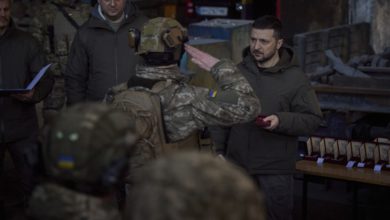

Kyle Muller earned his first career victory, Ronald Acuña Jr. and Austin Riley hit solo homers, and the Atlanta Braves beat the Cincinnati Reds 4-0 on Sunday to split a four-game series.Muller (1-1) who was recalled from Triple-A Gwinnett before the game, retired the first seven batters he faced and cruised through five scoreless innings, allowing one hit with a career-high nine strikeouts.Muller’s first win came in his second start and third career appearance.“It makes me feel like a big leaguer,” Muller said. “It’s really, really cool. Anyone coming into the big leagues is looking to have success early. Just knowing your stuff plays. It’s a big confidence boost.”Five relievers followed Muller, with only Shane Greene allowing a hit, to complete the two-hitter. Ender Inciarte’s catch against the wall in center robbed Joey Votto of an extra-base hit off Greene in the eighth.“Muller made a lot of good pitches,” Reds manager David Bell said. “He threw a lot of 3-2 breaking balls. We went deep into counts and almost broke through a few times.”The Braves went 8-for-53 with runners in scoring position in the series, but a pair of two-out RBI singles by Acuña and Freddie Freeman got them on the board in the third.Acuña’s solo homer to center, his 21st of the season, made the score 3-0 in the fifth. Riley led off the sixth with his 13th homer of the season, his first since June 13. The struggles continued at Great American Ball Park for right-hander Tyler Mahle (7-3), who came in with a 6.93 ERA in five starts at home and a 2.01 ERA on the road. He gave up four runs on six hits in six innings, walking one and striking out seven, and was outshined by the rookie Muller.“He used his secondary pitches to get himself ahead in counts,” Braves manager Brian Snitker said. “He was aggressive, had unbelievable pace.”KEY MOMENTThe Reds had runners on second and third in the third inning, but Muller struck out Joey Votto to end the threat. Muller pounded his fist in his glove as he came off the mound.“That was a big inning for me, more mentally than physically," Muller said. "Striking out a guy like that with runners on second and third, that was huge for me. I just needed to relax and make my pitches.”REVENGE TOURAcuña's home run came after Mahle knocked him down with a four-seam fastball that rode up and in and struck Acuña's bat as he turned to avoid getting hit. Acuna Jr. then crushed Mahle's 3-1 pitch deep to center.“It motivated me,” Acuña said through a translator. “The mentality becomes, there's no way I'm not going to get a hit this at-bat.”TRAINER'S ROOMReds: OF Jesse Winker was held out of the lineup as a precaution after leaving Saturday’s game with a right hip contusion. He walked as a pinch-hitter in the seventh then took over in left field. ... RHP Sonny Gray tossed three scoreless innings in his rehab start at Triple-A Louisville on Saturday and could rejoin the rotation this week. “He responded well,” Bell said. “Physically, everything went well, so he's on track.”UP NEXTThe Reds continue their 11-game homestand with a makeup game against the Phillies on Monday. The teams' June 2 game was postponed due to rain. The Braves begin a six-game homestand against the Mets on Tuesday.
Kyle Muller earned his first career victory, Ronald Acuña Jr. and Austin Riley hit solo homers, and the Atlanta Braves beat the Cincinnati Reds 4-0 on Sunday to split a four-game series.
Muller (1-1) who was recalled from Triple-A Gwinnett before the game, retired the first seven batters he faced and cruised through five scoreless innings, allowing one hit with a career-high nine strikeouts.
Muller’s first win came in his second start and third career appearance.
“It makes me feel like a big leaguer,” Muller said. “It’s really, really cool. Anyone coming into the big leagues is looking to have success early. Just knowing your stuff plays. It’s a big confidence boost.”
Five relievers followed Muller, with only Shane Greene allowing a hit, to complete the two-hitter. Ender Inciarte’s catch against the wall in center robbed Joey Votto of an extra-base hit off Greene in the eighth.
“Muller made a lot of good pitches,” Reds manager David Bell said. “He threw a lot of 3-2 breaking balls. We went deep into counts and almost broke through a few times.”
The Braves went 8-for-53 with runners in scoring position in the series, but a pair of two-out RBI singles by Acuña and Freddie Freeman got them on the board in the third.
Acuña’s solo homer to center, his 21st of the season, made the score 3-0 in the fifth.
Riley led off the sixth with his 13th homer of the season, his first since June 13.
The struggles continued at Great American Ball Park for right-hander Tyler Mahle (7-3), who came in with a 6.93 ERA in five starts at home and a 2.01 ERA on the road. He gave up four runs on six hits in six innings, walking one and striking out seven, and was outshined by the rookie Muller.
“He used his secondary pitches to get himself ahead in counts,” Braves manager Brian Snitker said. “He was aggressive, had unbelievable pace.”
KEY MOMENT
The Reds had runners on second and third in the third inning, but Muller struck out Joey Votto to end the threat. Muller pounded his fist in his glove as he came off the mound.
“That was a big inning for me, more mentally than physically," Muller said. "Striking out a guy like that with runners on second and third, that was huge for me. I just needed to relax and make my pitches.”
REVENGE TOUR
Acuña's home run came after Mahle knocked him down with a four-seam fastball that rode up and in and struck Acuña's bat as he turned to avoid getting hit. Acuna Jr. then crushed Mahle's 3-1 pitch deep to center.
“It motivated me,” Acuña said through a translator. “The mentality becomes, there's no way I'm not going to get a hit this at-bat.”
TRAINER'S ROOM
Reds: OF Jesse Winker was held out of the lineup as a precaution after leaving Saturday’s game with a right hip contusion. He walked as a pinch-hitter in the seventh then took over in left field. ... RHP Sonny Gray tossed three scoreless innings in his rehab start at Triple-A Louisville on Saturday and could rejoin the rotation this week. “He responded well,” Bell said. “Physically, everything went well, so he's on track.”
UP NEXT
The Reds continue their 11-game homestand with a makeup game against the Phillies on Monday. The teams' June 2 game was postponed due to rain. The Braves begin a six-game homestand against the Mets on Tuesday.
Source link






